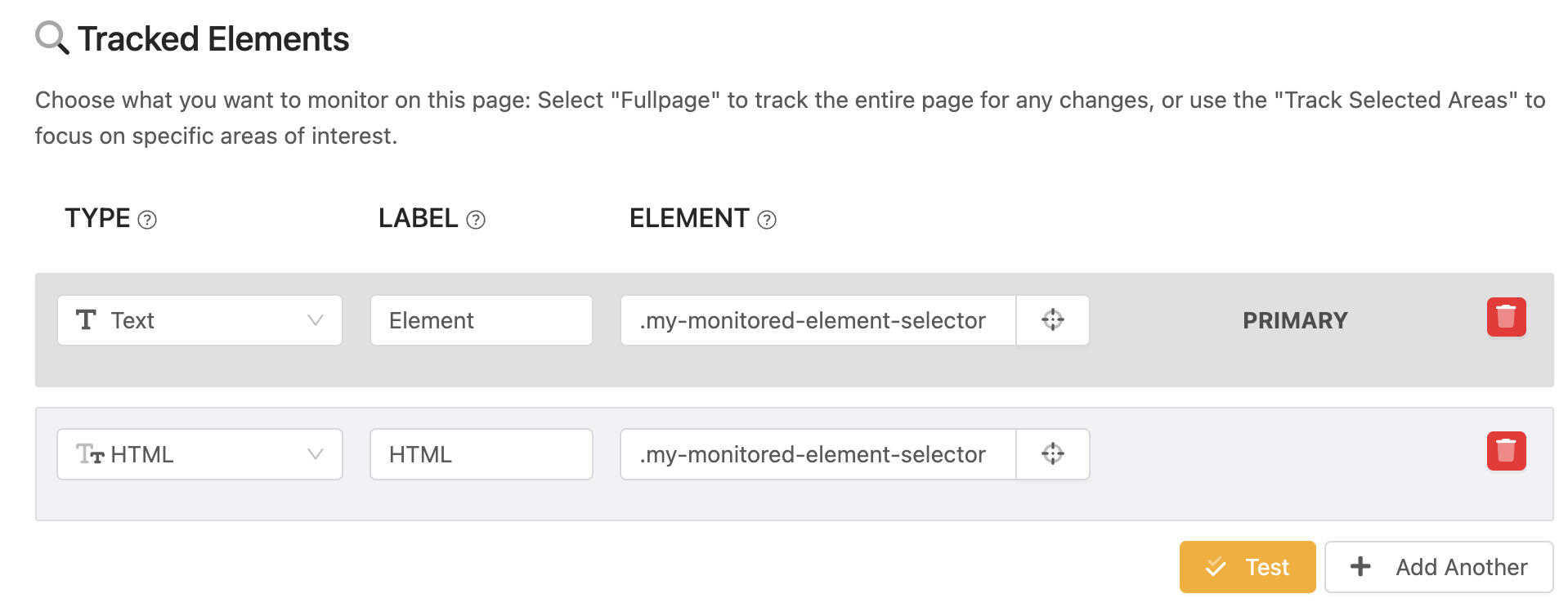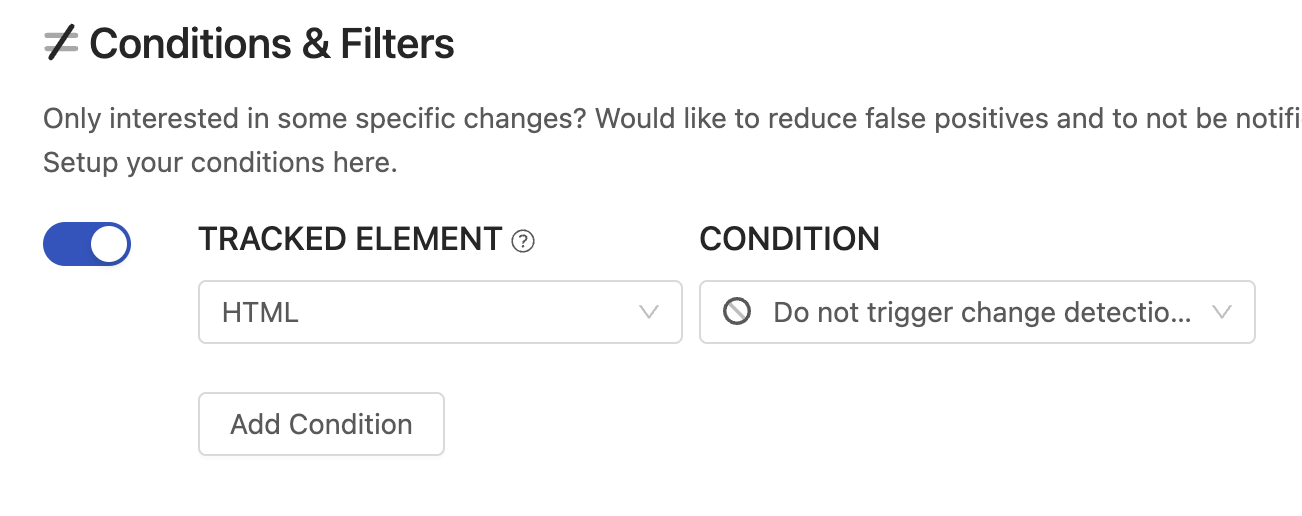
When monitoring web pages, you might find it useful to keep a historical HTML record for future reference. However, minor changes—such as dynamic updates to attributes, styles, or tags—can often trigger unnecessary alerts. These changes, while technically present in the HTML, might not affect the visual representation or the substantive content of the page.
Focus on Text Content: By monitoring the text content of a page rather than its HTML structure, you can significantly reduce the number of false alerts. Text content changes are more likely to represent meaningful updates to the page.
Use several Tracked Elements: In addition to text content, you can specify particular elements within the HTML that are of interest. This allows you to keep an eye on specific parts of a page without being overwhelmed by minor updates elsewhere.
Apply the Filter

To effectively manage your notifications and avoid being inundated with alerts for inconsequential changes, configure "Do not trigger notifications" filter. This filter is located within the "Conditions & Filters" section of your monitoring setup. Here's how to apply it:
- Navigate to the "Conditions & Filters" area under a specific page configuration.
- Look for the "Do not trigger notifications" filter and select it.
- Specify a tracked element (in this case HTML) that should not trigger change detection notifications.
By carefully adjusting your monitoring settings, you can ensure that you're alerted only to significant changes that impact the content's meaning or visual presentation. This approach helps maintain the effectiveness of your monitoring efforts without the distraction of frequent, unnecessary notifications.
